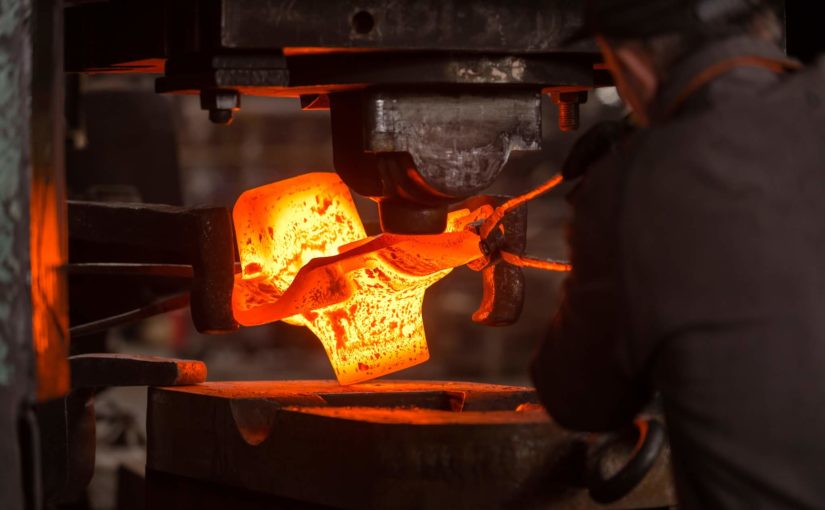Forging is a process in the manufacturing industry that is widely used for the production of industrial appliances and machinery. India’s forging industry has become one of the most prominent figures of income in the nation’s manufacturing sector. Pounding and squeezing metals to create robust and sturdy products is termed as the forging process. This process has become a cardinal element across all industries, and establishments nowadays are heavily dependent on efficient and high-performing parts created from this process. The process of forging primarily has two types, one of which clearly triumphs over the other in terms of production and quality.
Closed die forging and open die forging are the two most used forging processes.
Closed Die Forging
Also referred to as impression forging, this forging process involves the application of high-value pressure over metal billets or pieces placed on an enclosed die to create its impression with stark precision.
Open Die Forging
Open die forging is a process in which a metal billet or piece is deformed until the desired shape is achieved. This is done through putting the metal piece in between dies, which are not enclosed, and it is hammered or pounded around through rigorous movements until the desired shape is achieved.
Key Differences that make Closed Die Forging Better Than Open Die Forging
| Closed Die Forging | Open Die Forging |
|---|---|
| Due to the strong compression process in an enclosed die, final products obtained are in the desired shape without any additional processes | In most cases, the raw material has to go through multiple stages in the manufacturing process for getting the desired shape and density in the final product |
| The internal grain structure is compact and dense, which helps in creating strong and lasting products | Due to multiple production stages, the metal loses some grain structure and density |
| Especially better for manufacturing smaller products due to high precision and high tolerance product output | To attain the desired structure with accuracies and precision, machining is required oftenly, which distorts the process. This also makes this process inefficient in creating precision smaller parts |
| Provides a smooth and clean surface finish | Requires extra processes to attain a clean surface to remove the ruggedness due to the open die forging |
| For larger production scale, it is very economical | Requires multiple processes to attain the final product, which makes it uneconomical for large scale production |
Pradeep Metals has been one of the most prominent manufacturers incorporating the closed die forging process into their manufacturing units in India. Recognizing the many perks of the closed die forging over open die forging, we aim to leverage the high-end quality products manufactured through the process to become the leader in the forging industry. With a Compound Annual Growth Rate of 5.2%, the closed die forgingsegment of the forging industry is growing at a rapid rate in terms of production and revenue. Pradeep Metals’ objective is to use state-of-the-art machinery in the manufacturing process and produce products unparalleled in quality, as well as quantity.


